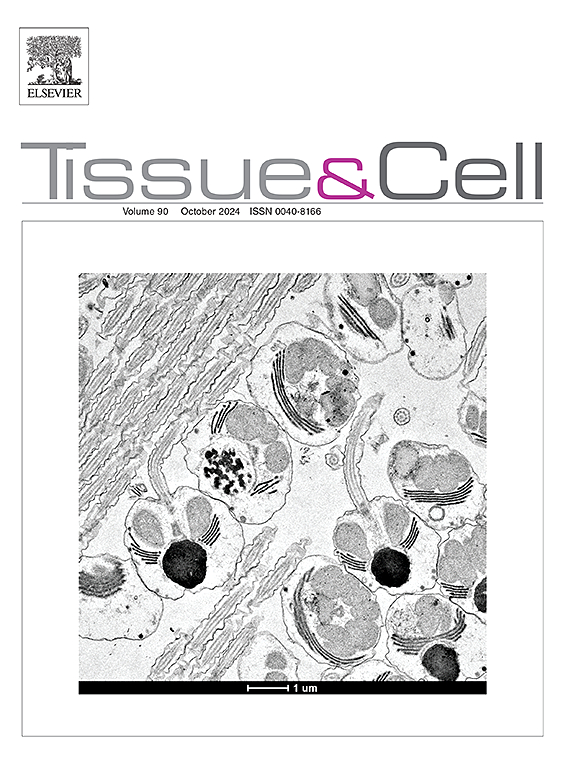Shikonin mitigates diabetic testicular dysfunction by improving oxidative, apoptotic, and metabolic functions in rats
IF 2.7
4区 生物学
Q1 ANATOMY & MORPHOLOGY
引用次数: 0
Abstract
Type 2 diabetes mellitus (T2DM) is a health concern worldwide, leading to high blood sugar levels and adversely affects various organ systems, including reproductive organs. The present study was conducted by the need to address the fact that T2DM exerts deleterious effects on male fertility via decreasing the circulating testosterone levels and increasing oxidative stress, apoptosis, and metabolic dysregulation in germ cells. The study purposes to explore the protective effect of Shikonin, a bioactive compound, on T2DM-induced reproductive damage. A high-fat diet along with streptozotocin (50 mg/kg) was administered for the induction of T2DM in male albino rats. The five experimental groups included, control, T2DM, T2DM+Shikonin (0.5 mg/kg), Only Shikonin (0.5 mg/kg), and T2DM+Metformin (50 mg/kg) were established for 4 weeks. Notably, Shikonin-treated diabetic rats exhibited significantly (p < 0.0001) increased body weight, Gonadosomatic index (GSI), Testosterone, and antioxidant response reflected in the significant increase (P < 0.05) in superoxide dismutase and catalase levels, while decreasing malondialdehyde. Histological analysis revealed improved testicular health in T2DM rats treated with Shikonin compared to those treated with Metformin. Shikonin treatment led to a further reduction in pro-apoptotic signaling (cytochrome c, caspase 9, and caspase 3) and improved metabolic disturbances by modulating levels of Fibroblast Growth Factor21 (FGF21) and Lactate Dehydrogenase C (LDHC) in T2DM rats. Compared with metformin, Shikonin showed the potential to offer more protective effects on male reproductive health while effectively managing diabetes, hence revealing its dual role. These findings disclose the significant (P < 0.05) potential of Shikonin in protecting reproductive health against T2DM-induced oxidative stress and apoptosis, hence giving a promising avenue for the therapeutic management of diabetes-induced reproductive complications. The study emphasizes the necessity for future human trials to assess the long-term effects and dosing of Shikonin as a therapeutic option for managing T2DM and its reproductive complications.
求助全文
约1分钟内获得全文
求助全文
来源期刊

Tissue & cell
医学-解剖学与形态学
CiteScore
3.90
自引率
0.00%
发文量
234
期刊介绍:
Tissue and Cell is devoted to original research on the organization of cells, subcellular and extracellular components at all levels, including the grouping and interrelations of cells in tissues and organs. The journal encourages submission of ultrastructural studies that provide novel insights into structure, function and physiology of cells and tissues, in health and disease. Bioengineering and stem cells studies focused on the description of morphological and/or histological data are also welcomed.
Studies investigating the effect of compounds and/or substances on structure of cells and tissues are generally outside the scope of this journal. For consideration, studies should contain a clear rationale on the use of (a) given substance(s), have a compelling morphological and structural focus and present novel incremental findings from previous literature.
 求助内容:
求助内容: 应助结果提醒方式:
应助结果提醒方式:


